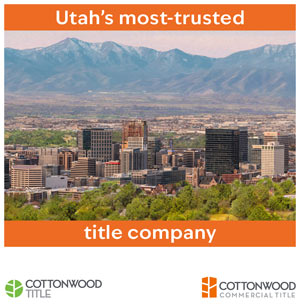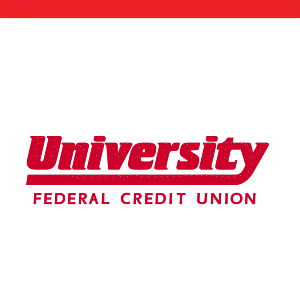Can you envision a road or bridge across Utah Lake? Natalie Gochnour can. The associate dean of the University of Utah David Eccles School of Business and director of the Ken C. Gardner Policy Institute at the university recently told a crowd in Salt Lake City that such a project makes sense because of the huge economic growth occurring in Utah County and the relatively large amount of developable land west of Utah Lake.
Can you envision a road or bridge across Utah Lake? Natalie Gochnour can.
The associate dean of the University of Utah David Eccles School of Business and director of the Ken C. Gardner Policy Institute at the university recently told a crowd in Salt Lake City that such a project makes sense because of the huge economic growth occurring in Utah County and the relatively large amount of developable land west of Utah Lake.
“I think it will not be very long before we see a very serious proposal to put a road or bridge across Utah Lake,” Gochnour said during a keynote presentation at a ULI (Urban Land Institute) Utah conference. “I can just see it. It’s a shallow lake, and someone will make a serious proposal for that because of the transportation efficiencies that will come from it.”
The growing prominence of Utah County was one of the “Big Three” issues Gochnour highlighted during her ULI presentation. The other two challenges or opportunities that Utahns “are talking about or should be talking about” are the rebuild of the Salt Lake City International Airport and speculation about whether another recession is looming.
As for Utah County, Gochnour noted that at the time of her talk, it had experienced 6.5 percent annual growth in jobs, far ahead of the state’s 3.9 percent figure. “That’s a stunning accomplishment for the second-largest county in our state,” she said.
Already, northern Utah County is “the epicenter of our state for real estate transactions,” she said. “In urban Utah, the place where there are the most significant opportunities is Utah County.” What’s more, she said, “the population and the political center of this state will keep shifting south.”
As for another of the “Big Three,” Gochnour tried a few methods to describe the scope of the airport redevelopment, which involves the terminal, rental car facilities, concourses and parking. The $1.8 billion capital project — with no local tax dollars being used — featured $15 million a month in construction spending last year, an amount that will double starting in 2016 and continue for two more years.
“From my standpoint, some of it (construction money) will go out of state, but a lot of it will go to local trade contractors and whatnot that build up this airport and sustain our economy,” she said. “It’s a very sizeable endeavor.”
The airport was built primarily in the 1960s and features 29 buildings “cobbled together,” she said. Originally designed to handle 10 million passengers annually, it now serves twice that. It also is in jeopardy of major damage from earthquakes.
The size of the rebuild is equivalent to eight city blocks long, and the airport must remain functional during the reconstruction.
“So we are in for a real treat. And I think this is one of the ‘Big Three’ that people are not talking about enough. This is a plum for our economy, both short-term and long-term, and fortunately it’s being done in a very fiscally responsible way,” Gochnour said.
She also said she is happy that the airport will remain in the same place. “One of our great advantages as an economy is access to the airport, and I’m sure visitors really appreciate that,” she said. “One of my favorite signs in the state is when you leave the airport, there is a sign that says, “Downtown, five minutes.’”
Time also was a focus during the discussion of the national and state recoveries from the Great Recession. Gochnour noted that the durations of national economic expansions are long than in the past because the U.S. economy is more service-oriented and companies have better feels for supply chain and inventory controls.
She believes the Utah economy “still has room to run.”
“Reasonable people would disagree with this, but essentially I’m a believer that the Utah economy is doing very well for a variety of fundamentals and we were doing it when the U.S. economy was still in recovery. Now we have the U.S. economy in expansion and that just puts wind behind our back and helps us,” she said.
Utah’s economy and the nation’s have similar make-ups, she said.
“Our industrial structures are about the same. That’s not commonly understood. People think [as] an interior western state, we’re going to be all energy or something. But we actually mimic the U.S., and so when the U.S. economy does well and various industries are doing well, that helps our industries do well.”
Gochnour said this is “a very prosperous time for our state,” with low unemployment and more than 50,000 net new jobs being created annually. And the job growth is happening in virtually all sectors. “Our growth is diversified, it’s private-sector driven and it’s positive,” she said.
While there are always things that could derail it — mostly from outside the Utah, such as activities in China — Gochnour hypothesized that Utah’s economy has reached a certain threshold, a certain size and maturity, and thus an ability to withstand challenges better than in the past. From the 2002 Olympics on, the area has seen investments in regional rail and transportation improvements, health facilities, schools, signature downtown developments such as City Creek Center, the downtown Broadway theater and ski areas, while also seeing “name” stores enter the Utah market and the state having direct flights to Europe.
“This threshold economy is this notion that, yeah, we’re growing, we’re doing well and we do well because of where we are in the business cycle and because of our investments and the decisions we’ve made,” Gochnour said, “but maybe we’re also doing well because we just hit that size and that level of assets that creates new opportunities and maybe that will just prolong this expansion just a little bit more.”





